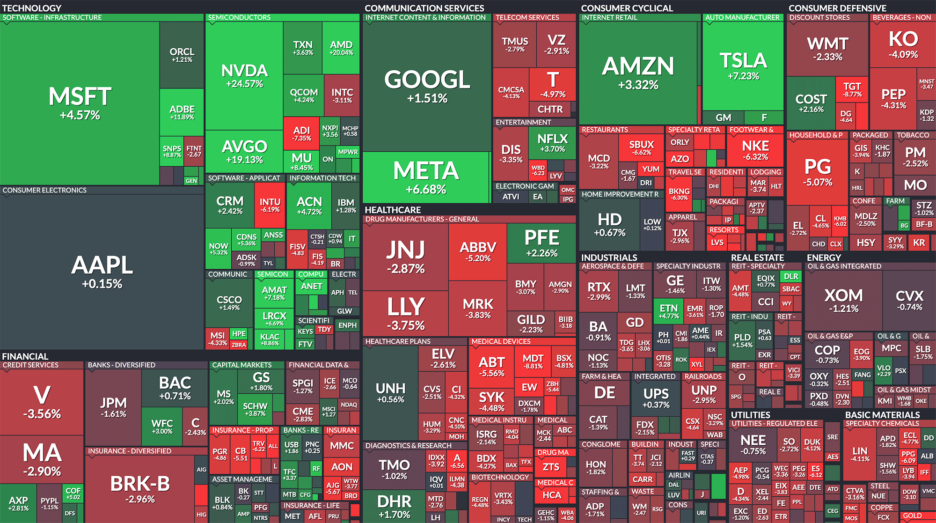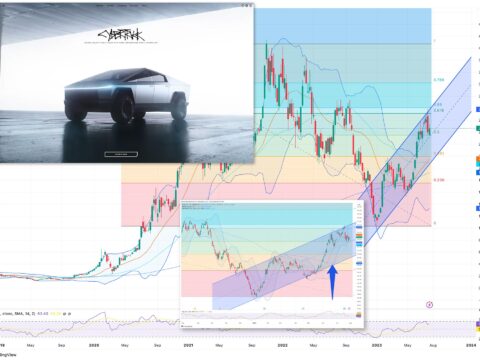NOTE: You can have the Strike Price on this one. What’s your buy price?
S&P 500 Index ETF: TSE:VFV // Purple 12 // Strike Price = $98
- 10 year CAGR = 12.7% (May 23, 2013 to 2023 || $30 -> $99)
- 5 year CAGR = 9.8%
- Future Growth Rate Estimate: 10%
- We are erring on the lower side for our estimate as it also corresponds to longer term results: the S&P 500 index tracker, SPY has a 30 year CAGR of 7.7%
- The US equivalent, VOO has a 10 year CAGR of 9.6% and 5 year CAGR of 8.7%
- VFV has out performed VOO because the CA$ has decreased vs the US$
- VOO has a lower expense ratio and higher yield, so if you have US$ in an RRSP for this investment, go that route. NOTE: dividends, paid out by a US Company, in a TFSA or regular investment account, have a 15% withholding tax applied by the US Gov. Please consult a financial advisor for tax implication clarification.
- 5 year Price Target = $160
// TL;DR
A simple way for Canadians to begin their investing journey. (US$, use VOO.) If you’re going to DCA, use nuance; only buy the dip, not just whenever your pay day occurs. VFV has good exposure to US large caps, but if your goal is exposure to all stocks and markets, other stocks are also required. VFV is mostly a wealth preserver, but there is some risk so a DCA strategy should be used if that’s your intention. VFV is designed to be mediocre as it is the benchmark. VFV is not a great wealth generator especially after inflation takes its cut. For wealth generation you need quality trading skills or patience along with a nose for finding great capital allocators and a strategy of buying when value is well below price; whether it’s socks or stocks, buy ‘em on sale.*
TBH we would prefer to make the strike price about 5% less than we did, but we have a hunch the market wants to run in the second half of 2023. But you do you.
* To paraphrase a Buffettism. One of his best adherents, Mohnish Pabrai, puts it thus: “Be patient and selective, saying no to almost everything. Exploit the market’s bipolar mood swings. Buy stocks at a big discount to their underlying value. Stay within your circle of competence. Avoid anything too hard. Make a small number of mispriced bets with minimal downside and significant upside.”
// WHY BUY
According to Vanguard: “Vanguard S&P 500 Index ETF seeks to track, to the extent reasonably possible and before fees and expenses, the performance of a broad U.S. equity index that measures the investment return of large-capitalization U.S. stocks. Currently, this Vanguard ETF seeks to track the S&P 500 Index (or any successor thereto). It invests directly or indirectly primarily in stocks of U.S. companies.”
VFV enables Canadians to pay CA$ for an S&P 500 index tracking ETF with a low expense ratio. The US$ equivalent is VOO. The S&P 500 is generally regarded as the standard benchmark for market performance; about 10% per year.
Reasons investors may want to own this ETF:
- Simple way to invest and DCA
- Exposure to the largest equities market in the world which is important as many Canadian investors are over-exposed to the Canadian market which has under-performed the US market by about 2% over the past 30 years
- Exposure to 500 large cap US listed companies
- Revenues of these companies is about 60% US generated and 40% international
- Exposure to all 11 sectors of the market; Info Tech about 25%, with Utilities, Real Estate, Materials and Energy about 3%
- Diversification, although it doesn’t include small and mid caps, emerging markets, bitcoin, etc. (NOTE: Charlie Munger, Buffett’s sidekick for more than four decades, said it’s “insane” to teach mandatory diversification when investing in stocks. 4–5 “best” ideas can change your life.)
- Low expense ratio (0.09%) vs yield (1.29%) – as of today
- Fairly low volatility, compared to the Nasdaq or many individual companies
- Fairly low risk fiscal inflation hedge (CPI, food and energy prices, etc)
- Fairly high monetary inflation reward (money printing, quantitative easing, etc)
- The S&P is the standard benchmark that all other investing results are measured against; the average of averages
- A place to store your wealth to maintain its value, as opposed to bank savings and low-interest (at least vs inflation) investing accounts
- If you want to store your money in anticipation of deploying it into opportunistic investments, this is a low-ish risk and okay reward option
- $1000 @ 10% over 10 years = $2594
- $1000 @ 10% – 3% inflation over 10 years = $1967 in buying power
// ChatGPT: WHY BUY
VFV is a popular investment choice for those looking to gain exposure to the S&P 500. The S&P 500 is made up of the 500 largest publicly traded companies in the US and is often seen as a benchmark for the overall health of the US stock market. By investing in VFV, you are essentially investing in a diversified portfolio of these large companies, which can provide long-term growth potential and help spread out your investment risk. Additionally, VFV has a low expense ratio, which can help keep your investment costs low.
// CONCLUSION
CA$ purchases, use VFV. US$ purchases use VOO. (NOTE: Use the percentage difference of our VFV Strike Price to actual price to determine the VOO Strike Price. The current equivalent Strike Price is $371.)
VFV as a tool for inexperienced investors to get in the game, makes sense. We would also encourage choosing a couple individual companies, one more blue chip that can outperform the market without resorting to dividends and a smaller position in a younger company that is further out on the risk curve that has a high revenue growth rate but is only on the cusp of profitability so that you can experience the fun of a dramatic price increase and/or the important lesson of a price decrease and learning to become a better investor to increase your ability to outperform the market in the future. Try to buy all three stocks on sale.
VFV makes sense as a tool for preserving wealth and generating a little alpha ($), with fairly minimal risk, especially if you are able to DCA with a slightly nuanced approach (buy during dips).
VFV makes sense as a place to store some cash in order to make opportunistic investment purchases after company or industry specific events. E.G. Chipotle in 2018 after its e-coli issue, or Tesla in late 2022 because Elon bought Twitter. However, the S&P 500 has been known to have 10% or more flash crashes and recessions, depressions and bubbles popping have taken it down 30% and even 50% or more. Generally you can expect a good drop every decade. There have been periods where the price has been underwater for well over a decade if you happen to buy near a previous all-time high and don’t reduce your cost basis via DCA.
VFV does not make sense if you want to generate wealth. It’s very nature is to be mediocre. $1000 @10% in 10 years equals $2594 but $1000 @ 15% equals $4046. CAGR matters.
// CATALYSTS
GDP growth, company earnings growth, inflation reduction, interest rate reduction, QE, fiscal stimulus, positive market sentiment. New bubbles forming. New innovations. US strength. Markets have a tendency to go up over time.
// RISKS
Stonks don’t always go up. Aka, the cyclicality of markets; caused by economic, debt and business cycles and human psychology. Stock markets crashes and economic downturns. Black swan events like pandemics.
// NEWS & COMMENTS
May 22, 2023
SA // buy: Rally Will Likely Gain Steam, Defying The Doom Scenarios
“There are undoubtedly some super smart arguments to be made on why the stock market should crash soon (at least these arguments may sound smart, because fear sells). But there is one fundamental rule in trading that overshadows all the analytical ‘sophistication’ of the bears:
Whenever the market is going up on bearish news, you better be sure to have a long position!
If one agrees with this rule, which I personally do, then there is overwhelming evidence on why stocks will continue to rally:
(1) The FED is rising rates at record pace, but the markets keep pushing higher;
(2) A recession is at the doorstep and earnings are contracting; but the markets keep pushing higher;
(3) Regional bank stocks are crashing and doomsters predict the next financial crisis, but the markets keep pushing higher;
(4) the U.S. government may default on its debt, but the markets keep pushing higher.”
// GGI 💬
Yup. Markets like to do the opposite of what everyone thinks it will do. EarningsBeats explains: “Ultimately, it {put-call ratio] reaches a high and then begins to turn lower as we run out of sellers. When this occurs, the S&P 500 has its largest gains historically. It’s the extreme bearishness that launches the stock market higher.”
Jan 18, 2023
SA // buy: Why The S&P 500 Is Not As Diversified As You Think
“The S&P 500 is a great core holding, however, it lacks several dimensions of an optimally diversified portfolio i.e. the sector, geographic, currency and cap size.”
“In his famous 2013 letter to Berkshire Hathaway shareholders, Warren Buffett outlined the directions he made in his will for the money he plans to leave to his wife:
Put 10% of the cash in short-term government bonds and 90% in a very low-cost S&P 500 index fund. (I suggest Vanguard’s.) I believe the trust’s long-term results from this policy will be superior to those attained by most investors – whether pension funds, institutions or individuals – who employ high-fee managers.”
“At 15.3% of the index, just three companies, Apple Inc. (AAPL), Alphabet Inc. (GOOG) and Microsoft Corp. (MSFT) have the same weighting as the entire Energy, Utilities, Materials and Real Estate sectors of the index combined. The four largest firms on the S&P 500 have a larger weighting than the smallest four sectors of the 11-sector index. VFV:CA’s top ten holdings account for over a quarter of the funds market weighting.”
// GGI 💬
A place to hold your cash (with some risk and reward though) as you await phat pitches in the market. However, Buffett advises this for his family who don’t have any interest in investing, it’s not what he does himself.
Oct 17, 2022
SA // buy: Outperform The TSX With The S&P 500
“For many investors, buying and holding a low-cost, diversified broad index ETF is one of the best long-term decisions one can make. For investors in their accumulation phase, the S&P 500 is an indispensable core component of a diversified portfolio.
Even if you consider yourself a skilled stock picker, adding an index fund to supplement your portfolio is not throwing in the towel on your DIY strategy.
The U.S. stock markets account for approximately 55% of the total world’s equity market, far ahead of the next largest market of Japan with 7.4%.
The Canadian stock market accounts for less than 3% of the world’s equity market and is dominated by the Financial and Energy sectors. According to a 2014 study by Vanguard, Canadian investors have an unhealthy bias towards investing in domestic Canadian equities. This study indicated that Canadian equities accounted for 60% of average Canadian investors. There are probably many reasons for this preference including human psychology and preferential dividend taxation rules.
This is concerning for many Canadian investors, as an overweight allocation to Canadian equities could lead to poor diversification and underperformance. The Canadian stock market tends to underrepresent many important sectors including Technology, Healthcare, Consumer Discretionary, Consumer Defensive and Industrials. From a performance perspective, many Canadian investors are also missing out on the average outperformance of U.S. equities relative to Canadian equities. For the 30 years ended December 2021, Canadian equities averaged 8.84% annually, compared to U.S. equities, which returned an average of 11.02% annually.”
// GGI 💬
très intéressant
Image: Map of the S&P 500 for the week of May 22 – 26, 2023 by FinViz.com





